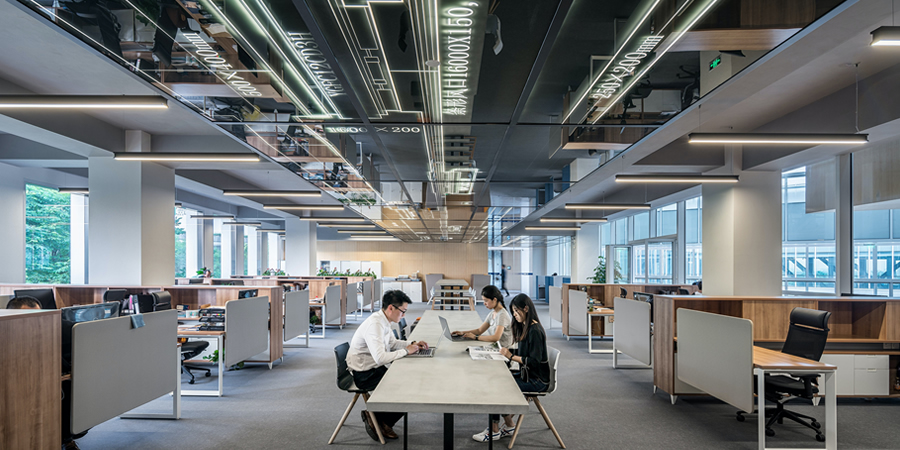Protecting the eyes from harmful blue light emitted by digital screens to enabling users with wireless projection and smart writing options, tech firms are busy addressing concerns arising from the need for smart offices and classrooms.
The speedy growth of information and communication technology (ICT) has given way to an inter-connected world by leveraging smart technologies. As a result, smart technologies are redefining the way we interact and do business and the emergence of smart cities and smart industries is becoming commonplace. In light of the Covid19 pandemic, businesses and individuals are looking for the best ways to work, benefiting from the advanced connectivity at our disposal.
As per market reports, smart office solutions are predicted to grow $24.15 billion during 2020-2024. During the pandemic, the smart office solutions market recorded YOY growth of 13.49% in 2020 and is expected to accelerate at a CAGR of over 14% during the forecast period.
Smart offices and their potential of productivity and employee well-being are already being assessed across industries.
A Deloitte analysis found out that in the current pandemic situation, implementing technology solutions at the earliest to improve operational efficiency is planned by 47% of banks in North America, 40% in Europe and 37% in Asia.
Talking of operational efficiency, the Dubai Statistics Center recently became one of the four government agencies to be granted the ‘100% Paperless Stamp’ by the Smart Dubai Department for full implementation of all the requirements of the Dubai Paperless Strategy. From February until June, reduction in use of printers by half and the automation of all paper forms, only 915 printed papers were used in the Center. By activating the electronic signatures for employees and removing 90% of printers, the Center reduced the number of printed papers to 189 by the end of September 2020.
A smart workplace must understand and respond to users by enhancing productivity, collaboration, safeguarding information, and improving work-life balance. For example, the use of integrated workplace management systems (IWMS) solutions and resource scheduling applications (RSAs) using artificial intelligence and the Internet of Things (IoT) with motion sensors and beacons, can alert employees to adhere to social distancing policies in their workplace, monitor air quality and keep employees informed. Additionally, cleaner air improves the recycling of air and contributes to energy-saving benefits and a healthier workplace. In some modern workplaces, employees can control the lights, heating, and blinds using apps and smart desks to suite their preferences whilst saving costs and energy.
Growth drivers
Integrated security and safety systems, eco-friendly buildings, and stricter policies for environment protection are pushing offices to use automated lighting systems and smart HVAC systems. The biggest driver for smart offices is to improve energy efficiency. Currently, commercial buildings account for 40% of the world's electricity consumption. Strategies that focus on facilities’ modernization, agile work environments and the value of employee experience will dictate the demands in smart workspace technologies.
Players and strategy trends
The smart office solutions market has many players such as Cisco, Nokia, Siemens AG, and United Technologies Corp among others offering their services. To up their game, strategic moves are being made in forms of collaborations, mergers & acquisitions (M&A) and technology and product launches to increase their competitive advantage.
Key tech trends for smart offices
Cybersecurity
The demand for cybersecurity solutions in smart offices will be the topmost priority. The latest survey results from PwC have identified cybersecurity as the major business risks for CEOs in the Middle East. According to the survey, 59% of CEOs in the Middle East aim to increase their investments in digital transformation by 10% or more over the next three years. Forbes reported a 600% increase in attacks on cloud servers in the first quarter of 2020.
Internet of Things
The use of smartphones, smart wearables, and household appliances has the answer in IoT technology for frictionless interaction between devices. Organizations will use IoT to better monitor important business data and identify areas of improvement for growth.
Business fiber
Smart office operations will be dependent on high-speed internet connectivity. Installation of business fiber connections will see a surge in demand for high capacity, low latency, multiple device support, bandwidth capacity, etc.
5G network
With remote working sites and multiple connected devices, 5G networks wireless connectivity will be supremely crucial for internal communications and business relations for improved speed and reliability.
With 5G-enabled cloud-based technology, products such as Virtual PBX will prove to be a cost-effective communications system for network flexibility, reliability, lower maintenance cost, and voice quality.
Video conferencing
Applications like Zoom and Cisco’s Webex have become the lifeline for people working from their homes. However, the support of reliable networks is inevitable for organizations to rely on video- and teleconferencing sessions and events. The cost-effectiveness of video conferencing products can only be equated with the stability and connectivity of robust networks.
Flexible workspaces
Organizations have no option but to play along with the ebb and flow of circumstances prompted by the ongoing pandemic. Fortunately, today’s technology allows for productivity from home or remote workspaces. Many companies are adopting flexible working strategies. ICT supports the interaction between technological innovation and organisational changes by fostering the implementation of flexible work models and an increase in operational efficiency.
Advancement in technology will dictate future smart office trends; however, the quality solutions rather than cheaper options will ultimately depend on how humans can be productive and efficient in their offices. Smart office solutions need to use technology that is going to enhance the workflow rather than pile up an unwarranted set of problems.
The ICT industry has a key role to play in enhancing the potential for innovation and expanding the range of options in work organisation, human resource, and office management and in turn find newer opportunities in revenue growth and business engagement across business verticals.
